Computer Engineering
Nytimes
54

Image Credit: Nytimes
What Sonic Detectives Listen for When Rockets Launch
- Rocket launches, especially from companies like SpaceX and Blue Origin, have become more frequent, causing increased noise levels that impact communities.
- The noise from rocket launches includes the roar of the rockets going up and the sonic booms from rocket boosters returning to Earth, shaking windows and disturbing residents.
- The complexity of how sound waves travel during rocket launches poses challenges, as existing rules and limits designed for other noisy events may not be sufficient.
- Scientists, like Kent Gee, are studying the sounds of spaceflight to understand what noise levels are acceptable and how to mitigate the impact, especially as companies like SpaceX test larger and louder rockets like Starship.
Read Full Article
3 Likes
Quantumfrontiers
12

Image Credit: Quantumfrontiers
The most steampunk qubit
- An artist was informed about a quantum-computing experiment using a 'mechanical qubit' by steampunk artist Bruce Rosenbaum.
- The 'steampunk qubit' stored quantum information in a vibrating mechanical device like a drumhead.
- Collaboration on a quantum-steampunk sculpture sparked discussion about incorporating the qubit design.
- Alp Sipahigil, from UC Berkeley, proposed a quantum qubit design using a cantilever mechanism.
- The proposed qubit design utilized energy levels of a cantilever for quantum information storage.
- A flaw in the plan involved the cantilever having multiple energy levels with equal inter-level energy gaps.
- A solution proposed was placing an atomic-force microscope to manipulate the cantilever's energy levels for quantum operations.
- By carefully choosing parameters, the cantilever could be controlled to hold quantum states without transitioning to higher energy levels.
- Alp expressed interest in building the mechanical qubit if he finds a suitable student to conduct the experiment.
- Chu's team used a superconducting qubit to alter their cantilever's energy levels in a similar experiment.
Read Full Article
Like
Medium
16
Image Credit: Medium
Science IV: Point Theory 4, Points Dimensions and Infinity
- Points and infinity share similarities as they both cannot be fully measured due to their infinite nature.
- By stacking an infinite number of 9s after .999, it becomes equal to 1, demonstrating the concept of infinity creating something out of nothing.
- Infinity in mathematics can be shown by equations like .999… = 1, indicating how repetition leads to equality in the infinite.
- The concept of points creating lines can be better understood by delving into the nature of infinity and sets equivalence.
- Infinity=infinity showcases that every real number value can correspond to values between -infinity and infinity.
- Mapping extra variables in infinite sets without overlap is possible, demonstrating the unique properties of infinity.
- Infinitely stacked points give rise to lines, highlighting how an immeasurable unit contributes to tangible creations.
- Moving to higher dimensions, stacking lines results in squares, and stacking squares gives rise to cubes, showcasing the progression of dimensions.
- The Inter-Dimensional theory proposes that the infinite stacking of lower-dimensional matter creates higher-dimensional matter.
- Ultimately, all matter can be traced back to infinite stacks of points, showcasing the foundational role of points in forming our reality.
Read Full Article
1 Like
Brighter Side of News
123
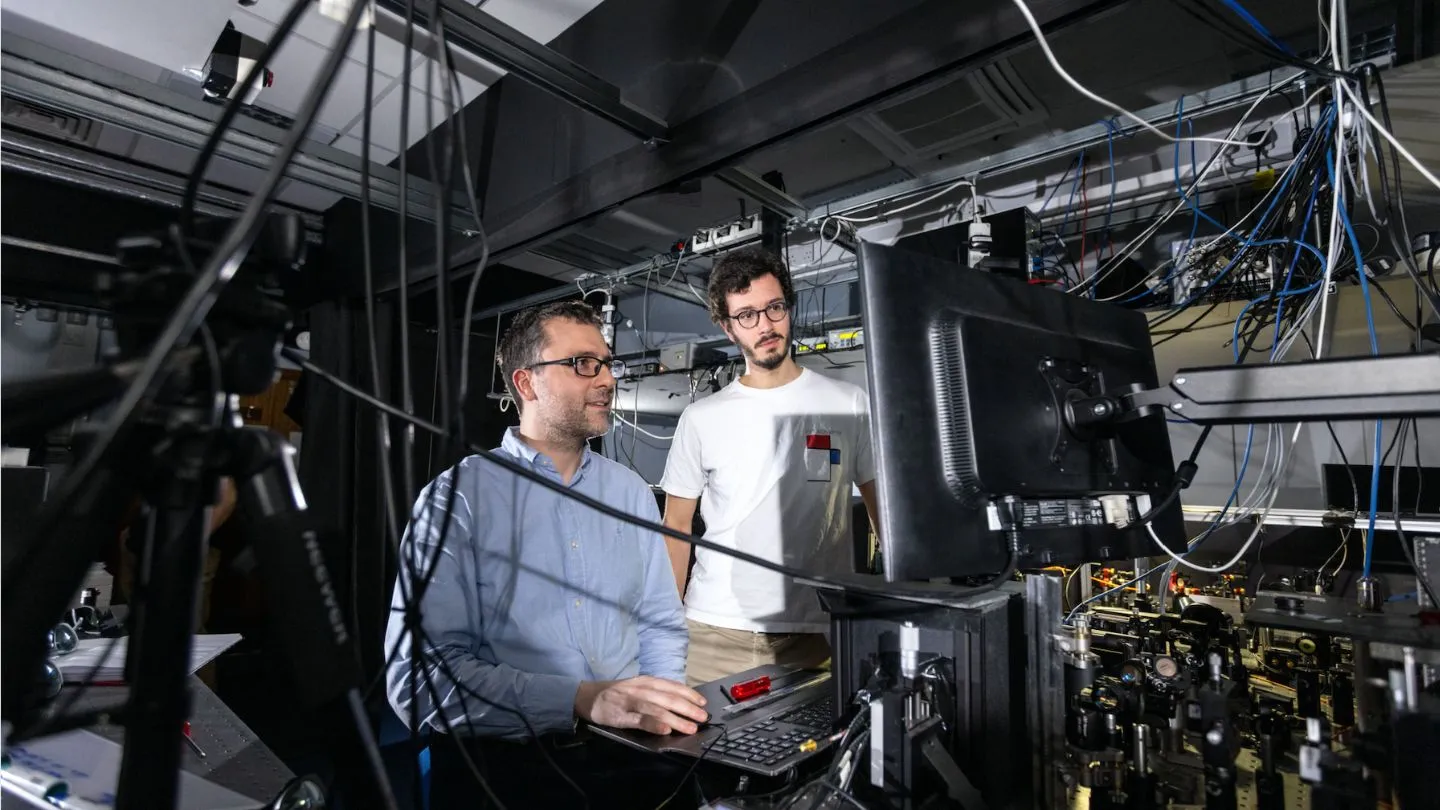
Image Credit: Brighter Side of News
Physicists rewrite quantum rules by bending light through both time and space
- Physicists at Imperial College London have conducted a new time-based version of the iconic double-slit experiment, exploring light's interaction with materials that change optical properties rapidly.
- The original double-slit experiment by Thomas Young in 1801 revealed light's wave-like behavior and dual nature as both waves and particles, revolutionizing quantum physics.
- The recent experiment altered light's frequency through lasers on a thin film, creating interference patterns in time instead of space, offering insights into light's fundamental nature.
- Published in Nature Physics, the findings open doors to advanced spectroscopy techniques and applications with potential in telecommunications and medical imaging.
- Controlling the timing and frequency of light could enhance data transmission speeds, optical computing, and medical imaging technology, contributing to faster and more efficient devices with reduced environmental impact.
- The research also provides a foundation for exploring time crystals and parallelized optical switches, promising more refined control over light with broader industrial applications in energy, defense, and aerospace.
- Metamaterials and quantum experiments like these offer the potential to reshape industries by manipulating light in space and time, paving the way for transformative advancements in technology and science.
- The experiment's significance extends to fields beyond telecommunications and computing, showcasing the profound impact of curiosity-driven research in driving innovation and advancements across various sectors.
- In conclusion, this groundbreaking work by Imperial College London exemplifies the transformative potential of understanding and controlling light, offering new possibilities in various domains from consumer electronics to healthcare.
Read Full Article
7 Likes
Discover more
- Programming News
- Software News
- Web Design
- Devops News
- Open Source News
- Databases
- Cloud News
- Product Management News
- Operating Systems News
- Agile Methodology News
- Startup News
- Cryptocurrency News
- Technology News
- Blockchain News
- Data Science News
- AR News
- Apple News
- Cyber Security News
- Leadership News
- Gaming News
- Automobiles News
Hobbieroth
76
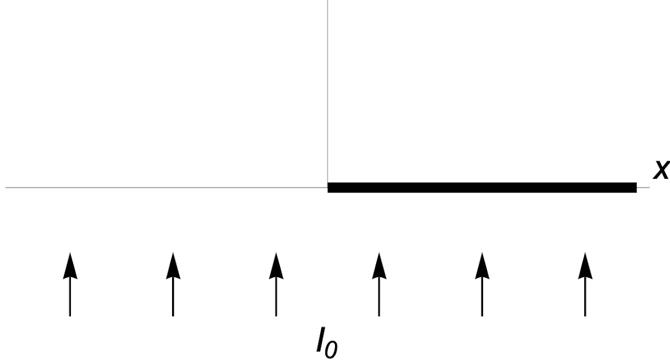
Image Credit: Hobbieroth
Knife Edge Diffraction
- Knife edge diffraction is a phenomenon that occurs when light diffracts off a screen, causing fringes to appear in certain regions.
- This problem can be solved analytically, involving Fresnel sine and cosine integrals.
- The intensity distribution beyond the screen reveals interesting oscillations and behavior based on mathematical functions.
- Wavelength plays a role in scaling the function along the x-axis, affecting how diffraction patterns appear.
- As wavelengths change, the distribution of intensity patterns adjusts, with long wavelengths spreading out more uniformly.
- Increasing the distance from the screen impacts how the intensity pattern spreads out, with a slower rate as the distance grows.
- Diffraction effects are most significant for long wavelengths, influencing phenomena such as visual acuity and microscope resolution.
- Sound waves also exhibit diffraction due to their long wavelengths, allowing them to bend around obstacles.
- Although complex, diffraction is a fundamental aspect of physics with applications in various fields like microscopy and ultrasound technology.
Read Full Article
4 Likes
Physicsworld
251
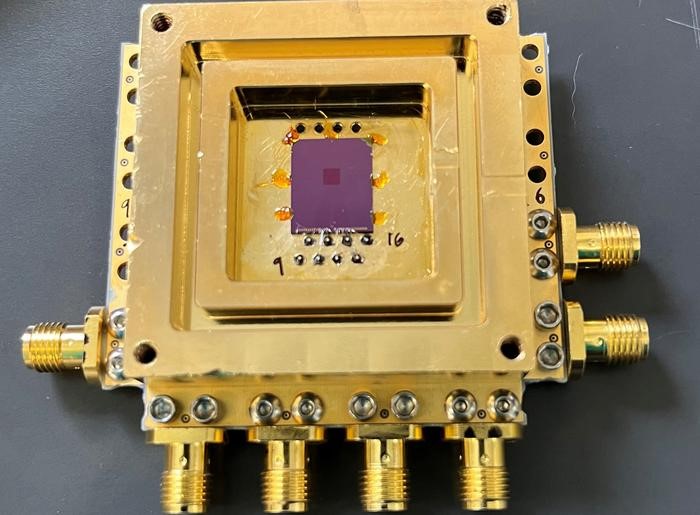
Image Credit: Physicsworld
Superconducting microwires detect high-energy particles
- An international team led by Cristián Peña at Fermilab has created a new detector using arrays of superconducting microwires to detect high-energy charged particles.
- Unlike traditional single-photon detectors, the new detector uses thicker wires capable of absorbing large amounts of energy from fast-moving protons, electrons, and pions.
- The superconducting microwire single-photon detector (SMSPD) was tested at Fermilab and showed sensitivity to various high-energy particles, with similar detection efficiency across different particle types.
- Further research aims to optimize the superconducting material and sensor geometry of SMSPDs to enhance detection efficiency, position and timing precision, potentially contributing to a deeper understanding of fundamental physics.
Read Full Article
15 Likes
Physicsworld
230
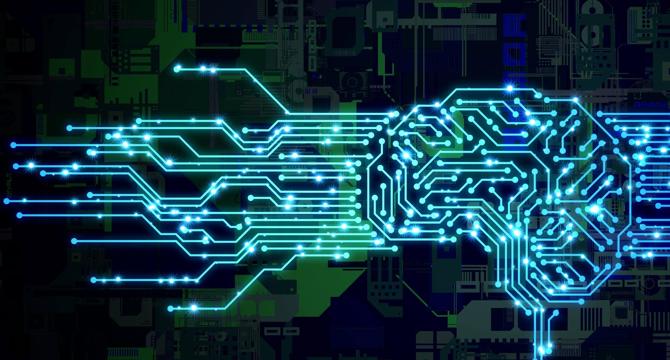
Image Credit: Physicsworld
What is meant by neuromorphic computing – a webinar debate
- Neuromorphic computing involves two main approaches: emulating biological neural processing systems through computational substrates and simulating neural processing systems on scalable architectures.
- A webinar debate hosted by Neuromorphic Computing and Engineering features teams of experts arguing for each approach, with an impartial moderator overseeing the discussion.
- Team emulation includes experts like Elisa Donati and Jennifer Hasler, while team simulation includes experts like Catherine (Katie) Schuman and Emre Neftci.
- The discussion chair, Giulia D’Angelo, is a Marie Skłodowska-Curie postdoctoral fellow focusing on neuromorphic algorithms for active vision.
Read Full Article
13 Likes
Physicsworld
328
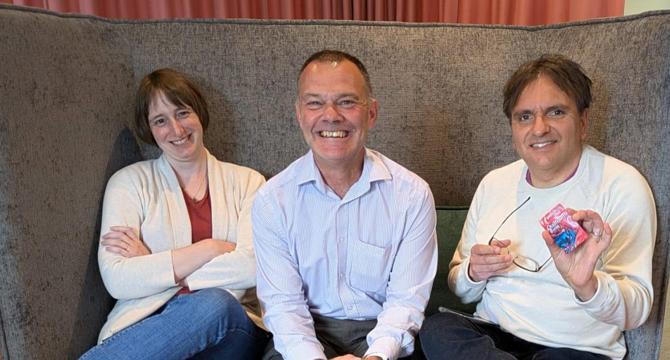
Image Credit: Physicsworld
A Martian aurora, how the universe fades away, Heisenberg on holiday, physics of fake coins
- NASA's Perseverance Rover observes the first aurora on Mars from the planet's surface.
- Physics World discusses the future of the universe and how the last stars will fade away.
- Werner Heisenberg's quantum mechanics foundations on the German island of Helgoland will be celebrated at a centenary event.
- Neutrons are used to differentiate between real and fake antique coins in a physics study, along with insights on the Physics World Quantum Briefing 2025.
Read Full Article
19 Likes
Knowridge
106
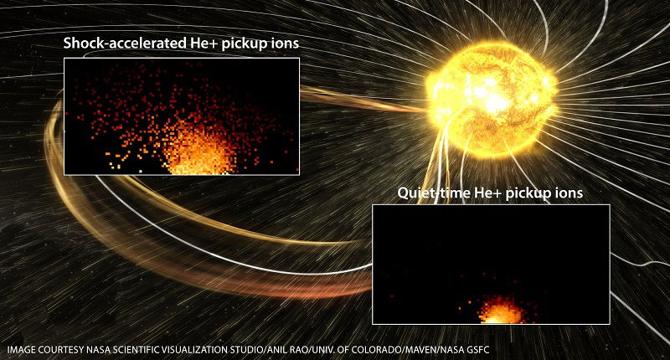
Image Credit: Knowridge
Scientists uncover how the Sun speeds up mysterious space particles
- Scientists at the Southwest Research Institute have discovered how the Sun influences helium pickup ions, a special type of space particle from outside our solar system.
- Solar activity, such as solar flares and coronal mass ejections, significantly impacts the speed and behavior of these helium pickup ions, which can travel up to twice as fast as the solar wind.
- By analyzing data from NASA's Solar TErrestrial RElations Observatory, researchers studied how these ions gain energy during solar events, especially their interactions with interplanetary shocks.
- Understanding the acceleration process of these pickup ions is crucial for predicting solar energetic particle events that can pose risks to astronauts, spacecraft, and technology on Earth.
Read Full Article
6 Likes
Fyfluiddynamics
29
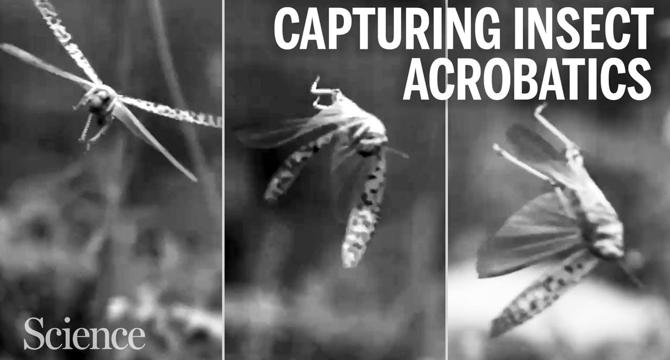
Image Credit: Fyfluiddynamics
Tracking Insects in Flight
- Researchers have designed a system with a moveable mirror that tracks an insect's motion in real-time, enabling better understanding of their flight maneuvers.
- This system allows capturing detailed footage of insects in both lab environments and the wild.
- The technology enables tracking individual pollinators throughout their daily activities and observing insect reactions in various scenarios.
- Real-time motion tracking provides valuable insights into the agility and control of insects during flight.
Read Full Article
1 Like
Physicsfromtheedge
286

No Need for Dark Galaxies
- A Chinese group discovered a swirling mass of hydrogen outside the Milky Way disc named AC G185.0-11.5, challenging the concept of 'dark galaxies' that rely on adding dark matter.
- Quantised inertia (QI) theory predicts the velocity of material at the edge of a system based on low acceleration, accurately predicting the newly observed system's orbital speed.
- The gas and dust mass of the observed system ranges from 3x10^7 to 4.7x10^8 solar masses, with QI predicting an orbital speed of 44.5 +/- 14.5 km/s, closely matching the observed rotational speed of 42.2 +/- 2 km/s.
- This discovery challenges the traditional notion of dark matter, with QI providing a more accurate explanation for the observed behaviors of these galactic systems.
Read Full Article
17 Likes
Physicsworld
329

Image Credit: Physicsworld
Ultrasound-activated structures clear biofilms from medical implants
- Researchers have developed a technology using ultrasound-activated moving structures to clear biofilms from medical implants without needing to replace the devices.
- The technology involves incorporating microscopic cilia on the implants that, when activated by an acoustic field, create fluid flows to remove biofilms on the surfaces of implants.
- The innovative approach aims to increase the lifespan of implants, reduce infections, and eliminate the need for uncomfortable and hazardous replacement surgeries for patients.
- Future applications of the technology could extend beyond urology to fields like visceral surgery and veterinary medicine, offering a promising solution for keeping implanted medical devices clean.
Read Full Article
19 Likes
Physicsworld
359

Image Credit: Physicsworld
Former IOP president Cyril Hilsum celebrates 100th birthday
- Cyril Hilsum, former president of the Institute of Physics (IOP), celebrated his 100th birthday last week at the Royal Society of Chemistry.
- Hilsum made significant contributions in developing commercial applications for semiconductor gallium arsenide and creating the UK's first semiconductor laser.
- He was honored with various awards during his career, including the Max Born Prize, Faraday Medal, and the Royal Society's Royal Medal.
- Currently, Hilsum works part-time as the chief science officer for Infi-tex Ltd, continuing to contribute to the field of physics at the age of 100.
Read Full Article
21 Likes
Knowridge
321

Image Credit: Knowridge
Scientists use sound waves to move objects underwater—without touching them
- Scientists from the University of Wisconsin-Madison have developed a special material that can control the movement of objects in water using sound waves.
- The material, a type of metamaterial created by Ph.D. student Dajun Zhang, has a sawtooth pattern on its surface that allows sound waves to push and pull objects in specific directions.
- By attaching the metamaterial to objects like wood or plastic foam, Zhang was able to move them in water using sound waves, achieving precise control over their movement and rotation.
- This touch-free manipulation technique has potential applications in underwater robotics, medical procedures like remote surgery, and targeted drug delivery within the human body.
Read Full Article
19 Likes
Medium
8
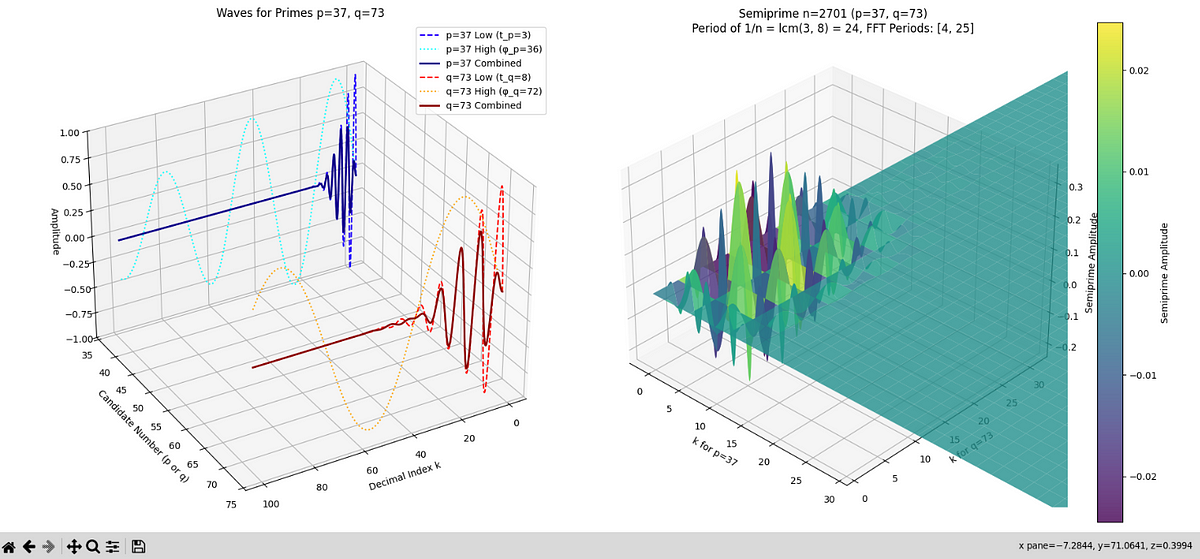
Image Credit: Medium
WaveGenesis: A Wave-Based Theory of Prime Numbers as Dynamic Constructs
- The WaveGenesis theory proposes prime numbers as dynamic constructs represented by interactions of Morlet wavelets in a lattice.
- For semiprimes n = p * q, the signal encodes waves of p and q, allowing separation through frequency analysis.
- The theory extends to dynamic graphs where primes are connected nodes, and two-dimensional wavelets model the lattice surface.
- Primes are stable attractors in a dynamic system, aligning with systems theory and geometric frameworks.
- The paper rigorously proves prime composition with waves through theorems and computational validations.
- The wave model involves two waves for the periodicity of primes and utilizes wave superposition for factorization.
- Geometric representations in a two-dimensional lattice and dynamic graphs illustrate the wave theory of primes.
- Temporal evolution transforms the lattice into a dynamic system where primes are stable states.
- The theory aligns with Unified Number Theory and provides theorems on wave collision, prime composition, and wave separation in semiprimes.
- Conjectures on graph connectivity, prime density, and spectral separation in semiprimes further explore the wave-based prime theory.
Read Full Article
Like
For uninterrupted reading, download the app